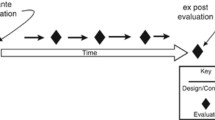Abstract
Formal approaches to software development require that we correctly describe (or specify) systems in order to prove properties about our proposed solution prior to building it. We must then follow a rigorous process to transform our specification into an implementation to ensure that the properties we have proved are retained. Different transformation, or refinement, methods exist for different formal methods, but they all seek to ensure that we can guide the transformation in a way which preserves the desired properties of the system. Refinement methods also allow us to subsequently compare two systems to see if a refinement relation exists between the two. When we design and build the user interfaces of our systems we are similarly keen to ensure that they have certain properties before we build them. For example, do they satisfy the requirements of the user? Are they designed with known good design principles and usability considerations in mind? Are they correct in terms of the overall system specification? However, when we come to implement our interface designs we do not have a defined process to follow which ensures that we maintain these properties as we transform the design into code. Instead, we rely on our judgement and belief that we are doing the right thing and subsequent user testing to ensure that our final solution remains useable and satisfactory. We suggest an alternative approach, which is to define a refinement process for user interfaces which will allow us to maintain the same rigorous standards we apply to the rest of the system when we implement our user interface designs.
Similar content being viewed by others
References
Bramwell C, Fields RE, Harrison MD (1995) Exploring design options rationally. In: Palanque P, Bastide R (eds) Design, specification and verification of interactive systems ’95, Wien. Springer, Berlin, pp 134–148
Bowen J (2005) Formal specification of user interface design guidelines. Masters thesis, Computer Science Department, University of Waikato
Bowen JA, Reeves S (2006) Formal refinement of informal GUI design artefacts. In: Proceedings of the Australian Software Engineering Conference (ASWEC’06). IEEE, New York, pp 221–230
Bowen J, Reeves S (2006) Formal models for informal GUI designs. In: 1st International Workshop on Formal Methods for Interactive Systems, Macau SAR China, 31 October 2006. Electronic Notes in Theoretical Computer Science. Elsevier, Amsterdam
Bowen JA, Reeves S (2007) Using formal models to design user interfaces, a case study. In: HCI 2007: Proceedings of the 21st BCS HCI Group Conference
Bowen J, Reeves S (2007) Formal models for informal gui designs. In: Electronic Notes in Theoretical Computer Science Volume 183, Proceedings of the First International Workshop on Formal Methods for Interactive Systems (FMIS 2006), July 2007, pp 57–72
Bowen J, Reeves S (2007) Refinement for user interface designs. In: Curzon P, Cerone A (eds) The Pre-proceedings of the 2nd International Workshop on Formal Methods for Interactive Systems (FMIS 2007). Lancaster University, UK, September 2007
Derrick J, Boiten E (2001) Refinement in Z and Object-Z: Foundations and advanced applications. Formal approaches to computing and information technology, May 2001. Springer, Berlin
Duke DJ, Harrison MD (1993) Abstract interaction objects. In: Proceedings of Eurographics ’93, Computer Graphics Forum
Duke DJ, Harrison MD (1995) Mapping user requirements to implementations. Softw Eng J 1(10): 13–20
Doherty G, Harrison MD (1997) A representational approach to the specification of presentations. Eurographics Workshop on Design Specification and Verification of Interactive Systems, DSVIS 97, Granada, Spain, June 1997
Faconti G, Paternò FM (1990) An approach to the formal specification of the components of an interaction. In: Vandoni C, Duce D (eds) Proceedings of Eurographics ’90, North Holland. Springer, Berlin, pp 481–494
Gnome (2002) GNOME Human Interface Guidelines(1.0), 2002. http://developer.gnome.org/projects/gup/hig/1.0/
Goldson G, Reeve G, Reeves S (2002) μ-Chart-based specification and refinement. In: Formal Methods and Software Engineering. 4th International Conference on Formal Engineering Methods, ICFEM 2002, LNCS, vol 2495, Shanghai, China, October 2002. Springer, Berlin, pp 323–334
Hussey A, MacColl I, Carrington D (2000) Assessing usability from formal user-interface designs. Technical Report TR00-15, Software Verification Research Centre, The University of Queensland
Hoare CAR (1983) Communicating sequential processes. Commun ACM 26(1): 100–106
13568 Iso (2002) Information Technology—Z Formal Specification Notation—Syntax, Type System and Semantics. Prentice-Hall International series in computer science. ISO/IEC, 1st edn
Limbourg Q, Vanderdonckt J, Michotte B, Bouillon L, López-Jaquero V (2004) Usixml: a language supporting multi-path development of user interfaces. In: EHCI/DS-VIS, pp 200–220
Microsoft. Microsoft visual studio, 2007. Microsoft technical pages for the Visual Studio Software
Morgan C (1998) Programming from specifications, 2nd edn. Prentice-Hall, Hertfordshire
Puerta A, Eisenstein J (2002) Ximl: a common representation for interaction data. In: IUI ’02: Proceedings of the 7th international conference on Intelligent user interfaces, New York, NY, USA, 2002. ACM Press, New York, pp 214–215
Paternò FM, Mori G, Santoro C (2003) Tool support for designing nomadic applications. In: Proceedings of 8th International Conference on Intelligent User Interfaces IUI’03. ACM, New York, pp 141–148
Paternò F, Santoro C (2002) One model, many interfaces. In: Kolski C, Vanderdonckt J (eds) CADUI 2002, vol 3. Kluwer, Dordrecht, pp 143–154
Reeve G (2005) A refinement theory for μCharts. Ph.D. thesis, The University of Waikato
User interface extensible markup language. Homepage for the USIXML project: http://www.usixml.org/
Wirth N (1971) Program development by stepwise refinement. Commun ACM 14(4):221–227
eXtensible Interface Markup Language. Homepage for the XIML project: http://www.ximl.org/
Author information
Authors and Affiliations
Corresponding author
Additional information
Communicated by A. Cerone, P. Curzon and D.A. Duce
Rights and permissions
About this article
Cite this article
Bowen, J., Reeves, S. Refinement for user interface designs. Form Asp Comp 21, 589–612 (2009). https://doi.org/10.1007/s00165-008-0095-2
Received:
Accepted:
Published:
Issue Date:
DOI: https://doi.org/10.1007/s00165-008-0095-2




